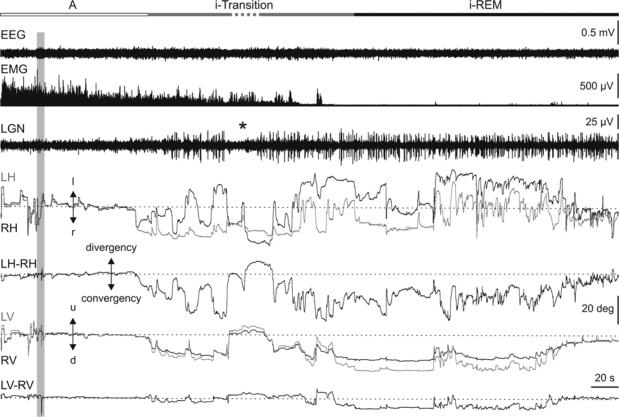Figure 2.
Eye movements and interocular disparities during cholinergically induced transition and REM sleep. Representative polygraphic recording and eye movements induced by carbachol (vertical gray bar) in the NRPO. From top to bottom: state qualifying bar for alertness (A, white bar), induced transition (i-Transition, gray), and induced REM (i-REM, black), electroencephalography (EEG), rectified electromyography (EMG) of the neck muscle, lateral geniculate nucleus (LGN) activity, left (gray traces) and right (black traces) horizontal (LH, RH) eye position, ocular disparity in the horizontal plane (LH-RH), left (gray traces) and right (black traces) vertical (LV, RV) eye position, and ocular disparity in the vertical plane (LV-RV). Carbachol microinjection during alertness (A) induced at short latency a transition period (i-Transition) followed by an induced REM (i-REM) sleep period. The i-transition period was characterized by the beginning of convergence and downward rotation of both eyes and miniature monocular isolated rapid eye movements in coincidence with isolated ponto-geniculo-occipital (PGO) waves at the LGN. In this example, the discontinuous state bar indicates an interruption of the i-transition period in which PGO waves, rapid eye movements, convergence, and downward rotation disappeared. The beginning of the i-REM period was identified by the occurrence of a burst of complex binocular rapid eye movements in coincidence with a burst of PGO waves at the LGN. Direction left (l), right (r), up (u), and down (d) of eye movements and calibrations for each trace are indicated.

